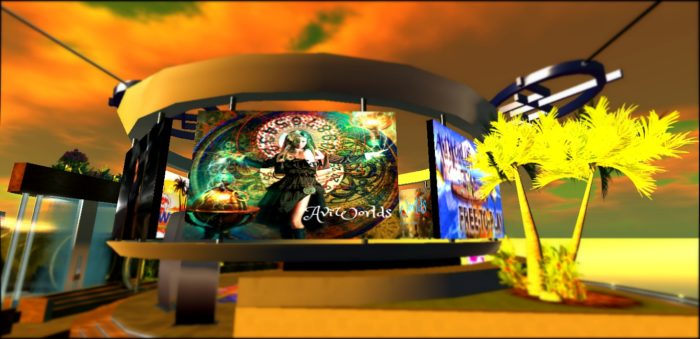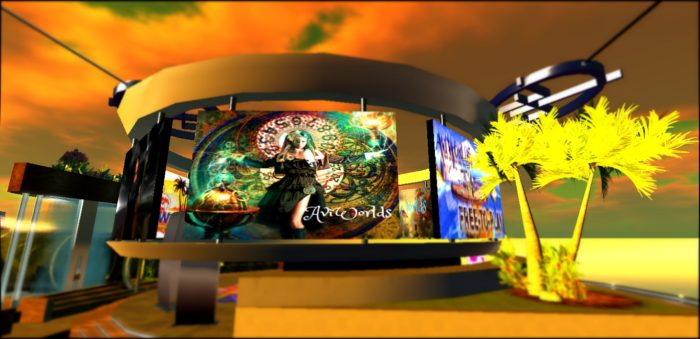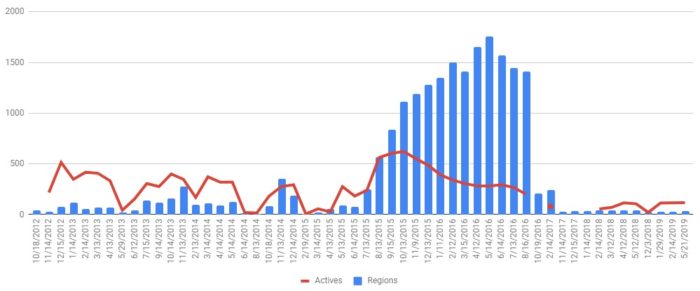In its ongoing quest to find a sustainable business model, the commercial AviWorlds grid is giving the no-hypergrid approach another go.
“AviWorlds needs to be a private community now,” grid owner Alexsandro Pomposelli told Hypergrid Business. “Avi-Labs needs to create value and also a distinguishing characteristic from all these other grids out there. So in order to keep our own we will need to be a closed commercial grid.”
AviWorlds, which is based in New York, has attempted the closed grid business model several times, most recently in 2017.
Hypergrid access will be shut down as of June 1, Pomposelli said.
“A hypergrid visitor does not contribute anything to our community except trying to take and copy our objects and products to other grids,” he said.
Hypergrid access allows OpenSim users to teleport from one grid to another as easily as they teleport between regions in the same grid, without having to create a new avatar for each new grid.
Hypergrid access also allows users to share content, send messages to friends on other grids, rent land, and even go shopping on other grids and brings products home. A multi-grid currency, Gloebit, is currently the most popular way to shop the hypergrid. See our list of Top 15 Gloebit shopping destinations and How to shop with Gloebits for more information.
By becoming a closed grid, AviWorlds residents will only be able to buy content available locally, and also won’t be able to invite friends over from other grids unless those friends first create and outfit new avatars.
Local merchants will only be able to sell to local residents, not to the entire OpenSim community. Event organizers won’t be able to attract participants from other grids. Since events and content are two of the major factors contributing to the success of a grid, turning off hypergrid access puts a grid at a significant disadvantage.
Content protection
There are several good reasons for why grids can be closed. Some do so to protect vulnerable communities. For example, a grid designed to provide PTSD sufferers with support, or to hold virtual AA meetings, or to create a safe space for GLBT youth in restrictive countries, might want to close their walls to protect their users. School grids turn off hypergrid access to keep students from leaving — and keep strangers from crashing classes. Operators of proprietary role playing games may want to keep the grid closed to protect the game experience — you don’t want people driving tanks they bring from other grids through all your medieval-era castles.
But the reason most often cited by grid owners for keeping their grids closed is that they do it to protect content creators.
However, the lack of hypergrid access does nothing to prevent copybotters from stealing most types of content. In fact, the biggest source of stolen content is the biggest closed grid of them all, Second Life.
The one exception here is scripted content. High-end, proprietary scripts cannot be stolen by hackers’ copybot tools, but if a user takes that content to a grid or region that they run themselves, they can give themselves “God powers” and unlock the script.
Content creators who sell high-end scripted content either stay on closed grids, or they write the scripts so that the core of the functionality is in the cloud, or on their own servers, and not in the content itself.
A third alternative is to pick a grid that allows creators to decide, on an item-by-item basis, whether the content can leave the grid or not. On Kitely, for example, creators can choose to have their content remain local, so that users can neither download it via OAR region export files, or take it with them to other grids via hypergrid teleport.
For the kind of content likely to be available on AviWorlds — clothing, landscaping items, and objects powered by commodity open-source scripts — being a closed grid offers no additional security.
However, being a closed grid does serve the purpose of locking in users. If someone wants to spend time on the grid, they have to create a local avatar, buy local clothing, and, if they want a place to live, rent local land. They also have to buy local currency to do all this.
That puts users at a great deal of risk. If the grid closes, as AviWorlds has done several times, they lose all their content, any currency they’ve purchased, their lists of friends and landmarks, and anything else that they hadn’t had time or ability to download first.
The risk is heightened by the fact that AviWorlds will have its own currency, instead of using a third-party, multi-grid currency like Gloebit.
And AviWorlds will not be accepting Kitely Market deliveries. The Kitely Market delivers more than 30,000 different virtual items to 345 different grids, and grids don’t have to be on the hypergrid to participate.
“We will build our own,” said Pomposelli. “AviWorlds is self-sufficient. I don’t want Kitely’s marketplace because then it involves a lot of restrictions and I want everything that’s made in AviWorlds to be for our residents only.”
However, AviWorlds currently reports just 118 active monthly users, according to its stats page — which may not be enough of a user base to create a self-sufficient community.
Pomposelli disagrees.
“We have enough creators and programmers that can do scripting and all the things,” he said. “I want AviWorlds to be a closed commercial grid, self-sufficient, with its own community, no matter how big or small it is.”
The trend is towards the hypergrid
In turning off hypergrid connectivity, AviWorlds is going against the flow. Against a very strong flow.
As of December 2018, hypergrid-enabled grids accounted for 99 percent of all reported OpenSim land area, as well as 96 percent of all reported active users.
OpenSim’s largest closed grid, InWorldz, shut down last summer. Its successor, Islandz, closed earlier this year. The other major closed grid, Avination, shut its doors in 2017. Of the remaining few commercial closed grids, Virtual Highway shut down in December.
The two closed grids left that are of any significance are Tag Grid and Dreamnation. Tag reported 450 active users this month, on 469 regions, while Dreamnation had 506 active users this month, on 349 regions, both of which are very decent showings, and both grids were in the top twenty most popular grids this month. The next most popular grid was Islands of Enlightenment, an educational grid, with 114 active users.
There are currently 21 closed grids on our active grids list. Other than Tag and Dreamnation, most are educational grids, though there’s a couple of roleplaying grids and small private communities on the list.
For people interested in creating an AviWorlds avatar, the signup page is here.
Standard 15,000-prim regions are US $40 per month, 25,000-prim regions are $55 a month, and two-by-two variable-sized regions are $85 a month for 100,000 prims.
Free plots are also available. Each is one-sixteenth of a region and can hold up to 937 prims.
Since AviWorlds was first founded in 2011, it has officially been shut down more than a dozen times and has gone through a variety of hosting providers and business partners. Some call it “the yo-yo grid.”
Today, the grid’s user numbers and land area are far, far down from its highs in 2015 and 2016, and the grid hasn’t been able to recover from a series of outages and scandals.
Should users give it another chance?
“The grid has been online almost a year,” said Pomposelli. “Can’t say as much for all the other ones who laughed at me, right?”

Source: Hypergrid Business



